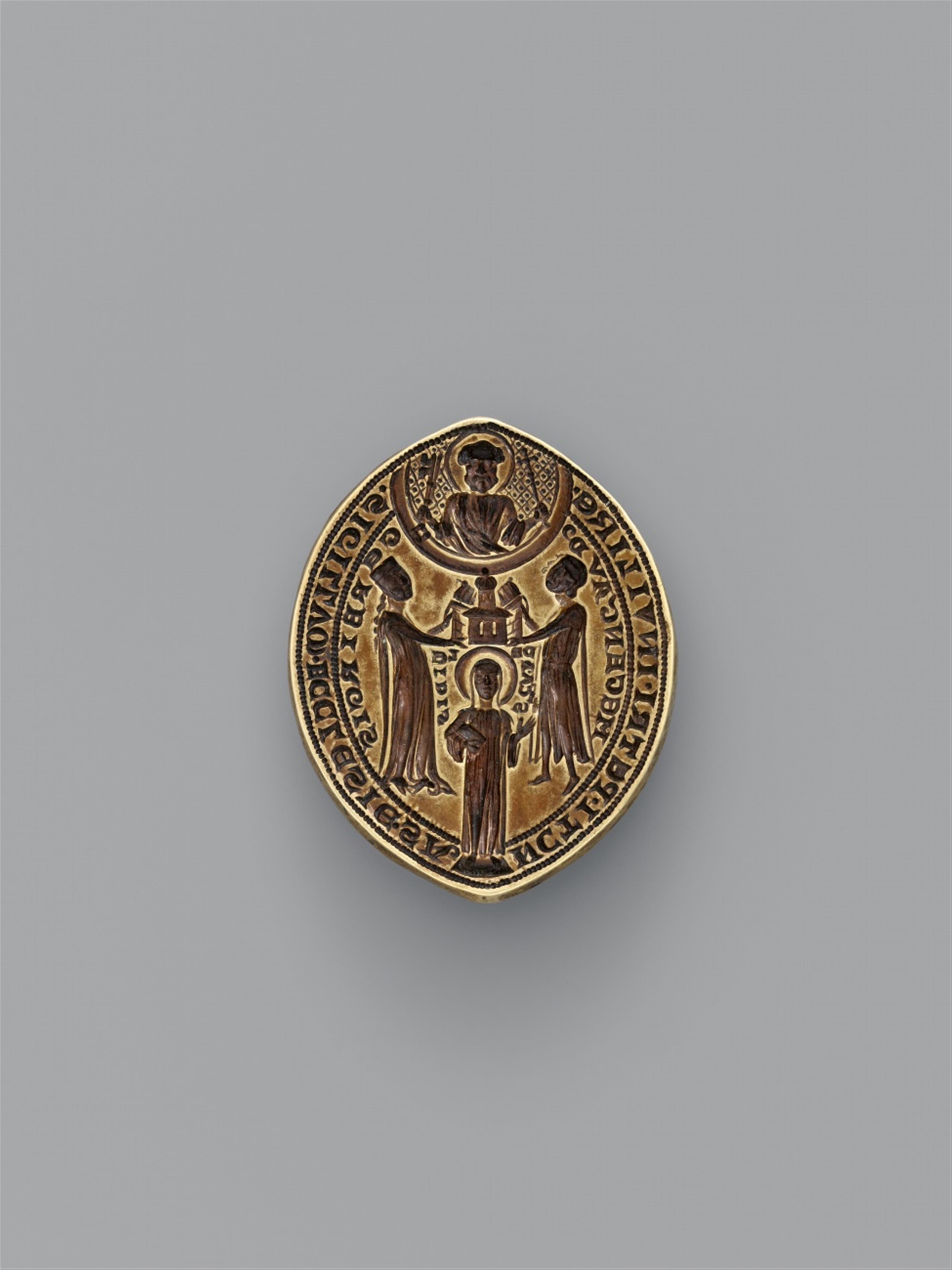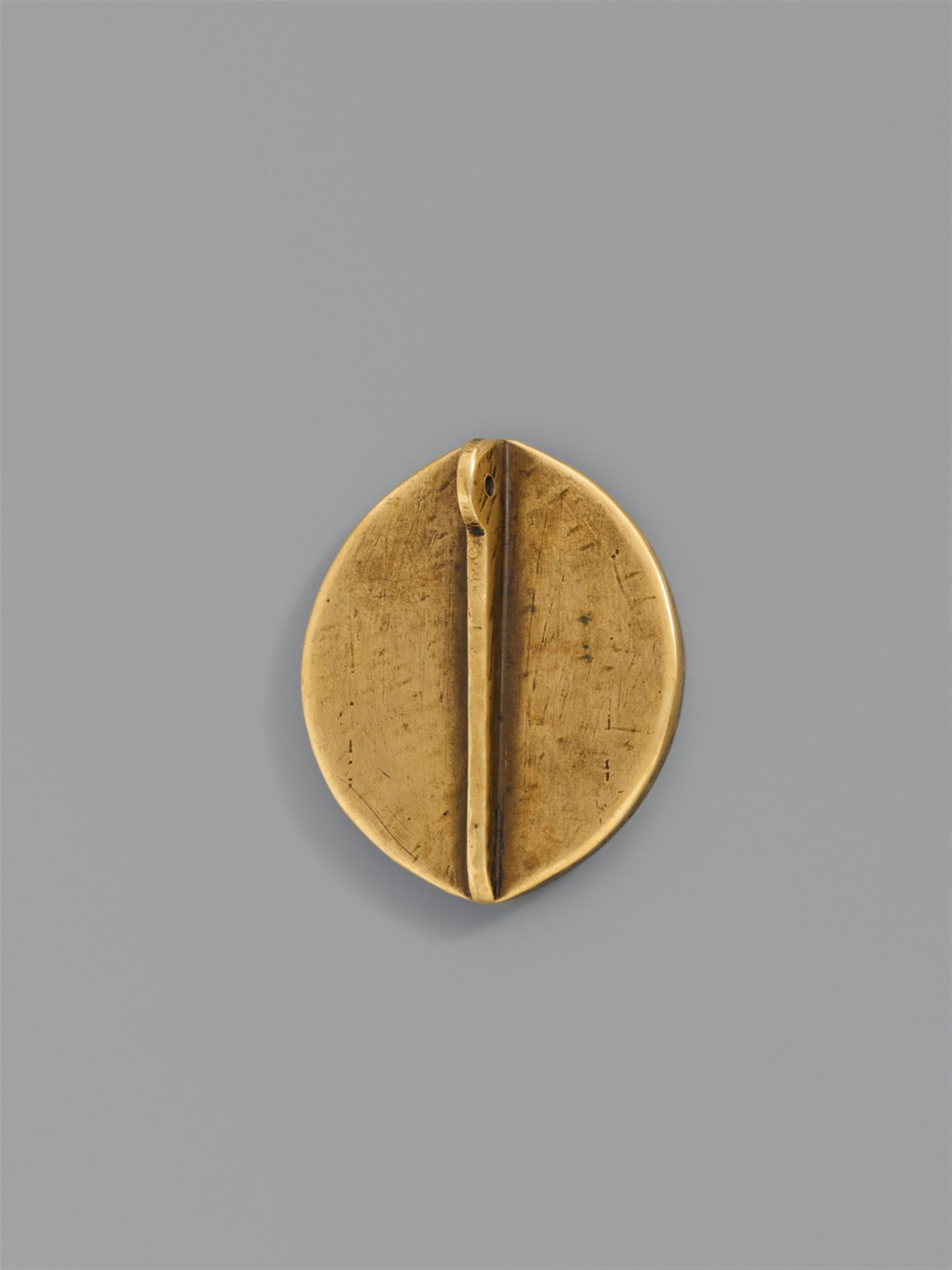Rhineland 13th century
A 13th century gilt brass seal matrix from Vilich, Rhineland
In perfect condition 8.2 x 6.5 x 1.8 cm (with handle).
The Benedictine nunnery in the town of Vilich near Bonn was founded in the 10th century, its church was dedicated to Saint Peter. This matrix is recorded in use in seals since 1242. It depicts the founders - the couple Megingoz and Gerberga - accompanied by Saint Adelheid, their daughter, and the Abbess, presenting the church to Saint Peter. The inscription surrounding the depiction reads “SIGILLVM ECCLESIE SANCTI PETRI IN VILIKE” and the figures are labelled “MEGENGAVD(VS) / GERBIRGIS / SCA ADELEIDIS”.
The matrix has been housed in a private collection of important medieval seals for the past several decades, and only recently came up for auction in Paris in 2015. Since then the material of the seal has been examined. In order to ascertain its authenticity and to compare it with two similar matrices in the parish of Vilich and the Kölnisches Stadtmuseum, it was also matched with the known imprints of the seal on medieval documents.
Dr. Joachim Oepen (Historic Archive of the Archdiocese of Cologne) has confirmed the positive results of this research in a letter dated 5.10.2017: “Due to its artistic quality, iconography, and sigillographic significance, the Vilich matrix - dating from the second quarter of the 13th century - represents an exceptional document of the artistic, cultural, and ecclesiastical history of the Rhineland in the 13th century.
The question of authenticity has been positively answered in a metal certification from the archaeological science centre of the Reiss-Engelhorn-Museen in Mannheim, which not only compared the material of the matrix the two further matrices with identical iconography mentioned above, but also matched all three matrices to extant seals. Several specialist centres were involved in these examinations, and they came to the conclusion that the seals in possession of the parish of Vilich and the Kölnisches Stadtmuseum must be forgeries or copies.” When and how the original Vilich matrix was lost is not known. Now is an excellent opportunity for this historically highly important seal to return to the Rhineland.
Certificate
Curt-Engelhorn-Zentrum Archäometrie, Mannheim 3.3.2016 (material expertise).
Provenance
The F. M. Collection - The former auctioned by Estimations & Ventes aux Enchères - Vente Drouot Richelieu, Paris, 21.12.2015, lot 9.
Literature
For the historical significance of the matrix in general, see: Wilhelm Ewald: Rheinische Siegel. vol. 4. Die Siegel der Klöster, Stifte und geistlichen Dignitäre, Bonn/Cologne 1931, pl. 17, no. 2. - Irmingard Achter: Die Stiftskirche St. Peter in Vilich, Düsseldorf 1968, p. 13, 27 & 338, illus. 1 & 268.




